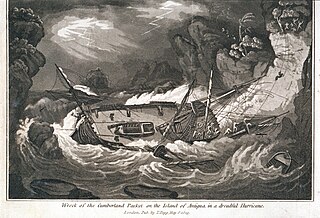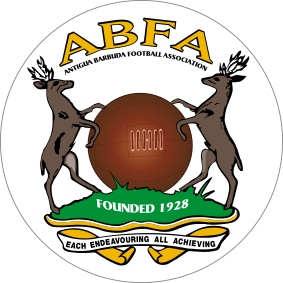
Antigua and Barbuda is a sovereign archipelagic country in the Caribbean. It lies at the conjuncture of the Caribbean Sea and the Atlantic Ocean in the Leeward Islands part of the Lesser Antilles.

The history of Antigua and Barbuda covers the period from the arrival of the Archaic peoples thousands of years ago to the present day. Prior to European colonization, the lands encompassing present-day Antigua and Barbuda were inhabited by three successive Amerindian societies. The island was claimed by England, who settled the islands in 1632. Under English/British control, the islands witnessed an influx of both Britons and African slaves migrate to the island. In 1981, the islands were granted independence as the modern state of Antigua and Barbuda.

Sir Vere Cornwall Bird, KNH was the first Prime Minister of Antigua and Barbuda. His son, Lester Bryant Bird, succeeded him as prime minister. In 1994, he was declared a "National Hero".

The national flag of Antigua and Barbuda was adopted on 27 February 1967 to mark the achievement of self-government. A competition to design the flag was held in which more than 600 local people entered. The winning design was put forth by nationally well-known artist and sculptor Sir Reginald Samuel.

The coat of arms of Antigua and Barbuda was designed in 1966 by Gordon Christopher. It was officially introduced on 16 February 1967. The symbolism of the arms is more complex than that found on the flag of Antigua and Barbuda, but many elements are similar.

Sir Wilfred Ebenezer Jacobs was the first Governor-General of Antigua and Barbuda.

Elections in Antigua and Barbuda take place in the framework of a parliamentary democracy.

The Antigua and Barbuda national football team is the national team of Antigua and Barbuda.

Antigua, also known as Waladli or Wadadli by the local population, is an island in the Lesser Antilles. It is one of the Leeward Islands in the Caribbean region and the most populous island of the country of Antigua and Barbuda. Antigua and Barbuda became an independent state within the Commonwealth of Nations on 1 November 1981.

The monarchy of Antigua and Barbuda is a system of government in which a hereditary monarch is the sovereign and head of state of Antigua and Barbuda. The current Antiguan and Barbudan monarch and head of state, since 8 September 2022, is King Charles III. As sovereign, he is the personal embodiment of the Crown of Antigua and Barbuda. Although the person of the sovereign is equally shared with 14 other independent countries within the Commonwealth of Nations, each country's monarchy is separate and legally distinct. As a result, the current monarch is officially titled King of Antigua and Barbuda and, in this capacity, he and other members of the Royal Family undertake public and private functions domestically and abroad as representatives of Antigua and Barbuda. However, the King is the only member of the Royal Family with any constitutional role.

The Antigua and Barbuda Football Association is the governing body of football in Antigua and Barbuda. They control the Antigua and Barbuda national football team.

The British Leeward Islands was a British colony from 1671 to 1958, consisting of the English overseas possessions in the Leeward Islands. It ceased to exist from 1816 to 1833, during which time it was split into two separate colonies. It was dissolved in 1958 after the separation of the British Virgin Islands, and the remaining islands became parts of the West Indies Federation.

General elections were held in Antigua and Barbuda on 1 November 1956. The Antigua Labour Party retained all eight elected seats and the party's leader Vere Bird became Minister of Trade and Production after a ministerial system of government was established. Voter turnout was 57%.
Antigua was discovered by Christopher Columbus, in 1493, and was named after the church of Santa Maria la Antigua in Seville. It was first settled in 1632. By the Treaty of Breda in 1667 it became a British Possession.

Antigua and Barbuda–China relations refer to bilateral relations between China and Antigua and Barbuda. Antigua and Barbuda has an embassy in Beijing. China has an embassy in St. John's. Diplomatic relations were established on January 1, 1983, less than two years after the Caribbean nation's independence, under Deng Xiaoping and Prime Minister Vere Bird, respectively. Diplomatic relations between the two countries have been smooth since then, as China supported Antigua and Barbuda's bid to join the United Nations.

General elections were held in Antigua and Barbuda on 29 November 1960. They were won by the governing Antigua Labour Party (ALP), whose leader Vere Bird was re-elected as Chief Minister, a position he had held since 1 January 1960 when the position was created.
The Antigua & Barbuda Athletic Association (ABAA) is the governing body for the sport of athletics in Antigua and Barbuda. Current president is Rodney Williams.

The COVID-19 pandemic in Antigua and Barbuda was a part of the ongoing viral pandemic of coronavirus disease 2019 (COVID-19), which was confirmed to have reached Antigua and Barbuda on 13 March 2020. As of 6 July 2021, there are a total of 1,265 confirmed cases, of which 1,222 have recovered and 42 have died.
Royal tours of Antigua and Barbuda by its royal family have been taking place since the 20th century. Elizabeth II, Queen of Antigua and Barbuda, visited the country thrice: 1966, 1977, and 1985.












